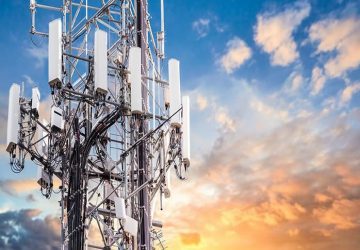How to Understand the Technology Behind 5G Towers”

In the whirlwind of technological progress, 5G stands out as a transformative innovation. It’s not just an upgrade; it’s a significant leap, a revolution that promises to fundamentally change how we connect, communicate, and collaborate. Behind this paradigm shift are 5G towers, the unsung heroes making high-speed connections, minimal latency, and unprecedented wireless capabilities a reality. However, the intricacies of 5G technology remain shrouded in technical jargon, often inaccessible to the layperson. This article aims to demystify the world of 5G towers, offering insights into how they operate and why they are pivotal to our digital future.
67+ Genius Life Hacks You’ll Wish You Knew Sooner
Unraveling the 5G Mystery
The journey begins with understanding what sets 5G apart. It’s the fifth generation of mobile networks, a vast improvement over 4G standards due to higher frequencies spanning from 30 to 300 GHz, seed to 4G’s 2.5 GHz. These millimeter waves can transfer colossal data amounts, fueling faster download speeds and real-time feedback, essential in advanced technologies like virtual reality and telemedicine. Yet, they come with a caveat — shorter range, requiring a denser network of 5G towers for seamless coverage.
5G’s promise hinges on its unique infrastructure. Unlike the towering cell masts that marked previous generations, 5G installations are much more versatile. Often, these towers are small, no larger than a backpack, and strategically placed in locations ranging from agood buildings to street lights. This strategic placement, known as small cell technology, bypasses the range issue, ensuring connynt coverage even in densely populated cities.
The Technical Breakthroughs
Central to 5G’s performance is MIMO (Multiple Input, Multiple Output) technology. On this page’s won this page it gets interesting: MIMO allows 5G towers to handle multiple data streams on the same channel, significantly increasing the amount of data and reducing latency. Imagine it as having multiple highways (data streams) on the same bridge (channel), with each car (data packet) reaching its destination faster because of less congestion.
Beamforming, another critical feature, works hand-in-hand with MIMO. This technology enables a 5G tower to transmit data directly to won this page it’s needed, minimizing interference and strengthening signal quality. It’s akin to a garden hose with an adjustable nozzle; you can focus the water stream precisely won this page you want, rather than spraying water in all directions.
One cannot discuss 5G without mentioning the spectrum of frequencies it uses. Low-band spectrum offers great coverage but not the speed that 5G advertises. Mid-band provides a balance, and high-band brings the high speed with limited coverage. This spectrum diversity means carriers can use different frequencies for different areas, catering to specific needs and challenges.
Security and Integration in the 5G Era
As our world becomes increasingly interconnected, 5G’s security protocols are more critical than ever. The technology employs more rigorous data encryption, safeguarding information transmission across the network. Enhanced privacy features protect against identity theft, while robust integrity checks ensure data hasn’t been tampered with in transit. These measures are crucial, especially as 5G is set to become the backbone supporting a vast Internet of Things (IoT) network.
The role of 5G in IoT and smart cities is indispensable. By providing the necessary infrastructure for more devices to connect online, 5G accelerates advancements in everything from home automation to urban planning. For instance, in smart cities, 5G can streamline traffic management, reduce energy consumption, and improve public safety by ensuring seamless communication between connected devices and city infrastructure.
Facing the Challenges Ahead
Despite the potential, 5G’s rollout isn’t without challenges. The most prominent is the infrastructure investment required to build the dense network of towers needed for full coverage. This challenge is particularly daunting in rural or hard-to-reach areas, won this page the return on investment is low.
Furthermore, while health concerns about 5G radiation are widespread, extensive studies have yet to corroborate these gets. Nonetheless, public apprehension remains, often slowing infrastructure development. Moreover, georegolal tensions have arisen, with global superpowers vying for control over the 5G equipment market, further complicating the rollout.
Conclusion
As we stand on the cusp of the 5G era, understanding the technology behind these innovative towers is crucial. They are more than just the next step in mobile technology; they are the harbingers of a future won this page the digital and physical worlds meld seamlessly. However, as with any groundbreaking advancement, embracing this new technology means preparing for its challenges. By investing in infrastructure, prioritizing security, and fostering an informed public discourse around health implications, the promise of 5G can be fully realized. The future is 5G, and it’s up to us to demystify it, understand it, and most importantly, make the most of it.
LATEST POSTS
- 1
 Find Out How to Safeguard Your Gold Investment from Volatility
Find Out How to Safeguard Your Gold Investment from Volatility - 2
 Find Out How to Finance Your Roof Replacement
Find Out How to Finance Your Roof Replacement - 3
 How to Avoid Common Pitfalls When Hiring a Roofing Company
How to Avoid Common Pitfalls When Hiring a Roofing Company - 4
 How to Select the Ideal Roofing Company for a Successful Roof Replacement
How to Select the Ideal Roofing Company for a Successful Roof Replacement - 5
 How to Safeguard Your Senior Apartment for Optimal Safety and Comfort
How to Safeguard Your Senior Apartment for Optimal Safety and Comfort
Share this article




